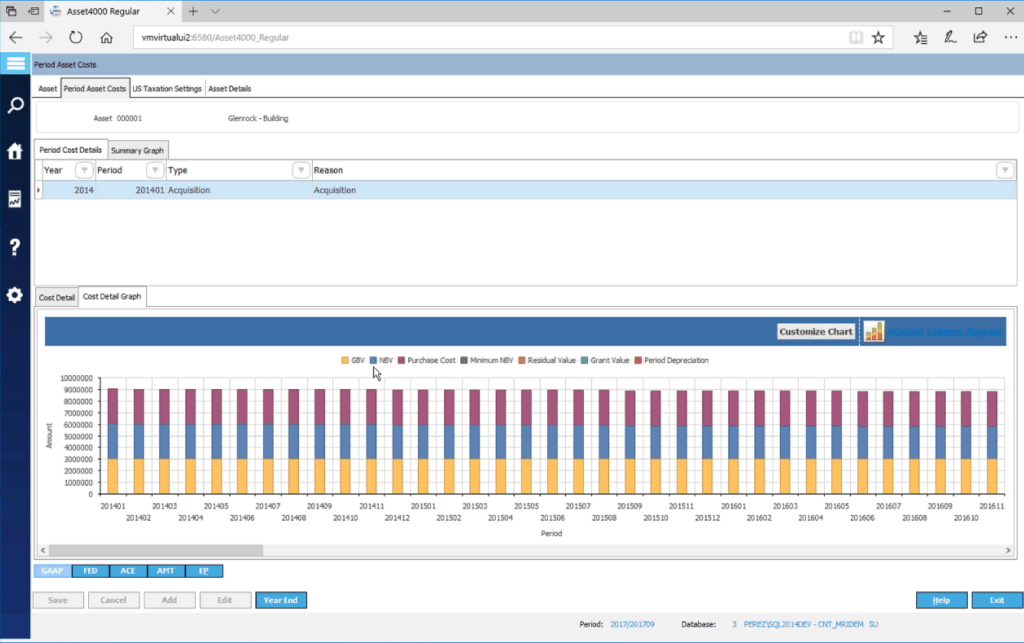

These kinds of statements disclose and help businesses to indicate the presence of accounting errors. This shows the relative importance of the individual figures in the statement. The results are expressed in both forms – percentages as well as pictorial form. Comparative statements are used to figure out finances which is a good practice for the business owner. This statement also enables a comparison of the expenses and revenues.
Common size analysis, also referred as vertical analysis, is a tool that financial managers use to analyze financial statements. It evaluates financial statements by expressing each line item as a percentage of a base amount for that period. The analysis helps to understand the impact of each item in the financial statements and its contribution to the resulting figure. Net income represents 10% of total revenues, and this margin can be compared to the previous year’s margin to see the company’s year-over-year performance. Provides a comparison of the company’s financial performance over the periods, and thus helps them to examine the trend of the business.
Key Difference – Comparative vs Common Size Statement
They can make important observations by analyzing specific line items in relation to the total assets. The standard figure that is used in the analysis of a common size income statement is the total sales revenue. The common size percentages are then calculated to show each line item as a percentage of the standard figure or the revenue.

Common-size financial statements present all the financial items under their head in percentage terms. While the Comparative financial statements present the financial data for numerous years side by side. This data is to be presented in the form of absolute values, percentages, or both.
The formula for common size analysis is the amount of the line item divided by the amount of the base item. Common size analysis evaluates financial statements by expressing each line item as a percentage of a base amount for that period. Write the difference between comparative analysis and common size analysis. This provides a comparison of an entity’s financial performance over multiple periods, which will help to determine the trends of the business. Write the difference between horizontal and vertical analysis of financial statements.
These statements assist to analyze and report the financial performance of the business over several periods with varying revenue or sales figures. The analysts analyze financial statements by contemplating each of the line items as a percentage of the base quantity/amount, for that specific accounting spell. Financial Statements play a very significant role in providing the financial data of the company to the users of accounting like owners, stakeholders, creditors, investors, banks, etc. The two main types of financial statements that present the information are common-size financial statements and comparative-size financial statements.
This is quite important to note that the common size calculation is the same as calculating the margins for a company. The net profit margin is the net income that is divided by the sales revenue, and this is typically the common-size analysis. This is the same for calculating the gross margin , and the operating margin (that is the gross profit minus the selling & general administrative expenses, divided by the sales revenue). By looking at this common size income statement, we can see that the company spent 10% of revenues on research and development and 3% on advertising.
A comparative statement is a type of document that is used to compare a particular financial statement with the period statements. Common size analysis can be conducted in two ways, i.e., vertical analysis and horizontal analysis. Vertical analysis refers to the analysis of specific line items in relation to a base item within the same financial period. For example, in the balance sheet, we can assess the proportion of inventory by dividing the inventory line using total assets as the base item. The most important aspect of comparative statement is the ratio calculation using the information in financial statements. Ratios can be compared with ratios of previous financial year ratios as well as industry standards.
Comparitive and common size
In this article, we will understand the complete difference between common size and comparative size statements. The comparative statement compares current year’s financial statement with prior period statements by listing results side by side. Analyst and business managers use the income statement, balance sheet and cash flow statementfor comparative purposes. These are mainly prepared for internal decision-making purposes to be analyzed by the management. On the other hand, horizontal analysis refers to the analysis of specific line items and comparing them to a similar line item in the previous or subsequent financial period.
- Write the difference between horizontal and vertical analysis of financial statements.
- Comparative statements are used to figure out finances which is a good practice for the business owner.
- The Structured Query Language comprises several different data types that allow it to store different types of information…
- While on the other hand, common-size financial statements show all items in the form of percentages making them useful for analyzing current-year results.
One of the benefits of using common size analysis is that it allows investors to identify large changes in a company’s financial statements. It mainly applies when the financials are compared over a period of two or three years. Any significant movements in the financials across several years can help investors decide whether to invest in the company. Benefits of common size analysis is that it allows investors to identify large changes in a company’s financial statements, as well as the ability to compare companies of different sizes. The balance sheet common size analysis mostly uses the total assets value as the base value. A financial manager or investor can use the common size analysis to see how a firm’s capital structure compares to rivals.
Example of a Common Size Income Statement
On the other hand, common size financial statements present all items in percentage terms making it useful for analyzing current period results. Common size financial statements present all items in percentage terms where balance sheet items are presented as percentages of assets and income statement items are presented as percentages of sales. Published financial statements are common size statements that contain financial results for the respective accounting period. In the above example, if the results were presented for a single accounting period, it is a common size statement. Common size statements are useful in comparing results with similar companies. The common size income statement is another type of income statement in which basically each line item is expressed as a percentage of the value of revenue or the sales.
The statements also reveal unusual spikes in the information which will help to indicate the presence of accounting errors. The results are expressed in both percentages and pictorial form. It shows previous financial results side by side along with its change in amount/percentage. The Structured Query Language comprises several different data types that allow it to store different types of information… This is used to compare the company’s results with their competitors. This analysis shows the previous year’s financial results which occur side by side along with the changes in the amount or its percentage.
Common size financial statements analyze and then compare a company’s performance over several periods with varying sales figures. Whereas the common size financial statements present all these items in percentage terms more often. The technique can be used to analyze the three primary financial statements, i.e., balance sheet, income statement, and cash flow statement. In the balance sheet, the common base item to which other line items are expressed is total assets, while in the income statement, it is total revenues. So, with the above discussions, we can simply conclude that the difference between these terminologies depends on how the financial data in the statements are presented.
Quite an importance of individual figures is shown in a statement with a comparative analysis. Analysts analyses this common size as an income statement whereby dividing each line item by the top line . Common size analysis is also an excellent tool to compare companies of different sizes but in the same industry. Looking at their financial data can reveal their strategy and their largest expenses that give them a competitive edge over other comparable companies. For example, large drops in the company’s profits in two or more consecutive years may indicate that the company is going through financial distress.
In the above statement, it becomes convenient to compare results and express them in following forms. Gain in-demand industry knowledge and hands-on practice that will help difference between comparative and common size statement you stand out from the competition and become a world-class financial analyst. Structured Query Language is a programming language used to interact with a database….
From the table above, we calculate that cash represents 14.5% of total assets while inventory represents 12%. In the liabilities section, accounts payable is 15% of total assets, and so on. It is useful to compare results with its previous financial years. For example, if the value of long-term debt in relation to the total assets value is high, it may signal that the company may become distressed. These statements help a firm to predict future performances and results.
Similarly, considerable increases in the value of assets may mean that the company is implementing an expansion or acquisition strategy, potentially making the company attractive to investors. When comparing any two common size ratios, it is important to make sure that they are computed by using the same base figure. This common size statement prepares the references for the stakeholders. The statements are useful to compare results with their previous financial years. Trend analysis can be depicted in a graph to show the trend line so that it becomes convenient for the decision makers to understand the overall performance and status of the company at a glance.
What is the Difference Between Comparative Financial Statement and Common Size Financial Statement?
Although common size analysis is not as detailed as trend analysis using ratios, it does provide a simple way for financial managers to analyze financial statements. This kind of statement assists the investors to examine the business trends and make excellent decisions for investments. Both the Comparative and the Common-Size financial statements give a more or less view of the financial statement of the company.
Relative importance of individual figures can’t be shown in statement with comparative analysis. Learn accounting fundamentals and how to read financial statements with CFI’s free online accounting classes. For example, some companies may sacrifice margins to gain a large market share, which increases revenues at the expense of profit margin. Such a strategy may allow the company to grow faster than comparable companies.
Comparative size statements are more convenient to compute ratios and directly compare the performances and results because these statements present financial information for several years side by side. While on the other hand, common-size financial statements show all items in the form of percentages making them useful for analyzing current-year results. The base item in the income statement is usually the total sales or total revenues. Common size analysis is used to calculate net profit margin, as well as gross and operating margins. The ratios tell investors and finance managers how the company is doing in terms of revenues, and can be used to make predictions of future revenues and expenses. Companies can also use this tool to analyze competitors to know the proportion of revenues that goes to advertising, research and development, and other essential expenses.
